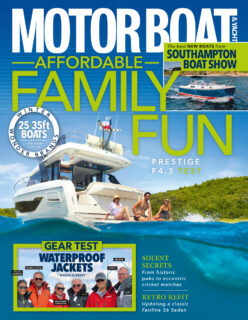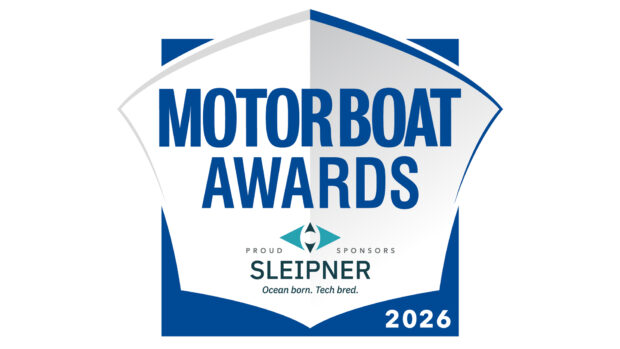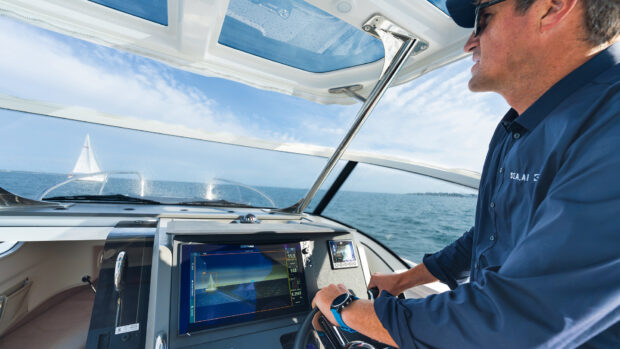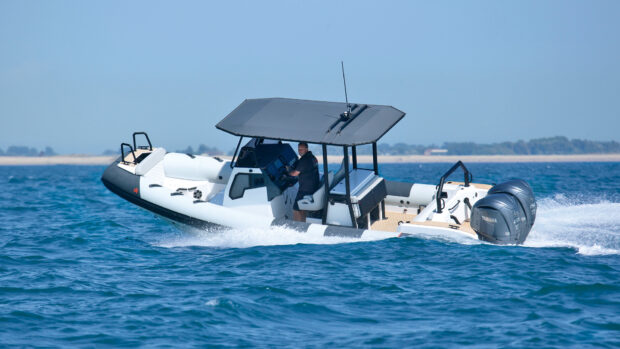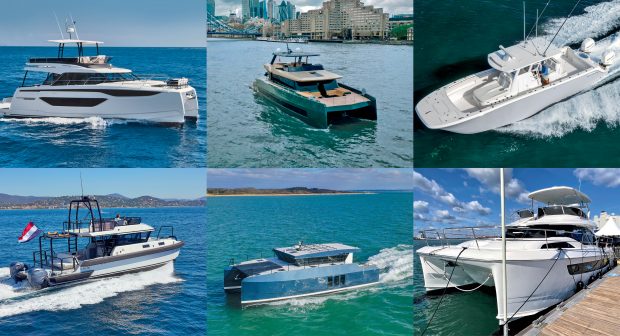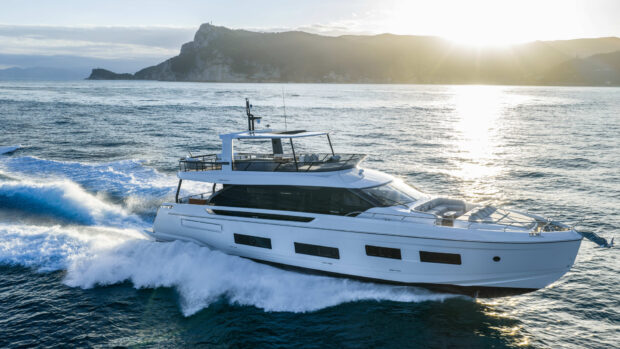Leaving an alongside berth, especially on a smaller boat, can just be a case of pushing the boat far enough out to allow you to drive away, but it's not always that easy...
It’s usually easiest to push the bow out as it’s lighter and moves quicker than the stern. When leaving in forward gear be careful not to steer away from the dock too soon or the stern may swing in and hit the pontoon.
Any additional wind or current will either help or hinder you. If these are pushing you away from the berth, it should be possible to just let go and let the elements take the boat away.
However, if they are pushing you back onto the berth and making it much trickier to leave, what should you do? If possible, you should try to leave into the elements, as this gives the most control and allows the slowest departure.
So, if the elements are on the stern, then it’s best to leave stern first. The shape of the bow helps here as there is already a small gap between the point of the bow and the dock, which it can pivot into as you steer the stern away from the dock.
In light conditions this may allow you to simply apply full steering lock away from the dock and engage astern. If the conditions are a bit stronger, then you can increase the angle of departure by putting the bow closer to the dock before departing.
Article continues below…

How to dock a boat: Coming alongside in a single-engined RIB

How to dock a boat: Three simple methods for single shaftdrive boats explained
To do this, first make sure there is a fender to lean on, then apply full helm towards the dock before engaging a brief click of ahead gear then immediately back into neutral. Now apply full lock away from the dock and engage astern gear.
This drags the boat away at a wider angle and enables a good, positive departure. If the elements are on the bow, then in light conditions you might get away with one of the two stern first above techniques described above but, ideally, you want to leave bow first into the elements.
This poses two problems. Firstly, many small boats don’t have a bow thruster to help push the bow away from the doc. Secondly, the stern is often square, difficult to fender and easy to damage on the dock.
So, if there is no bow thruster, the best way to get the bow out is to use a stern spring. Rig a line leading forward from the boat’s stern cleat to a cleat on the dock at least one metre ahead of it.
Loop it round the cleat and then take it back aboard, preferably to the same cleat you started from. Only use as much line as you need – too long and it might snag when trying to release it – and fender the stern well, even on a RIB, as the tube will be pushed against the dock making it vulnerable to damage from sharp protrusions.
Now engage astern so that the line goes taut and levers the bow away from the dock. As soon as the bow is out as far as you need it to be, engage neutral, slip the line bringing it all inboard smartly and drive ahead, once again keeping a close eye on the stern’s proximity to the pontoon.
If you enjoyed this…
Be first to all the latest boats, gadgets, cruising ideas, buying advice and readers’ adventures with a subscription to Motor Boat & Yachting. Available in both print and digital formats, our monthly magazine will be sent directly to your home or device at a substantial discount to the usual cover price. See our latest offers and save at least 30% off the cover price.
